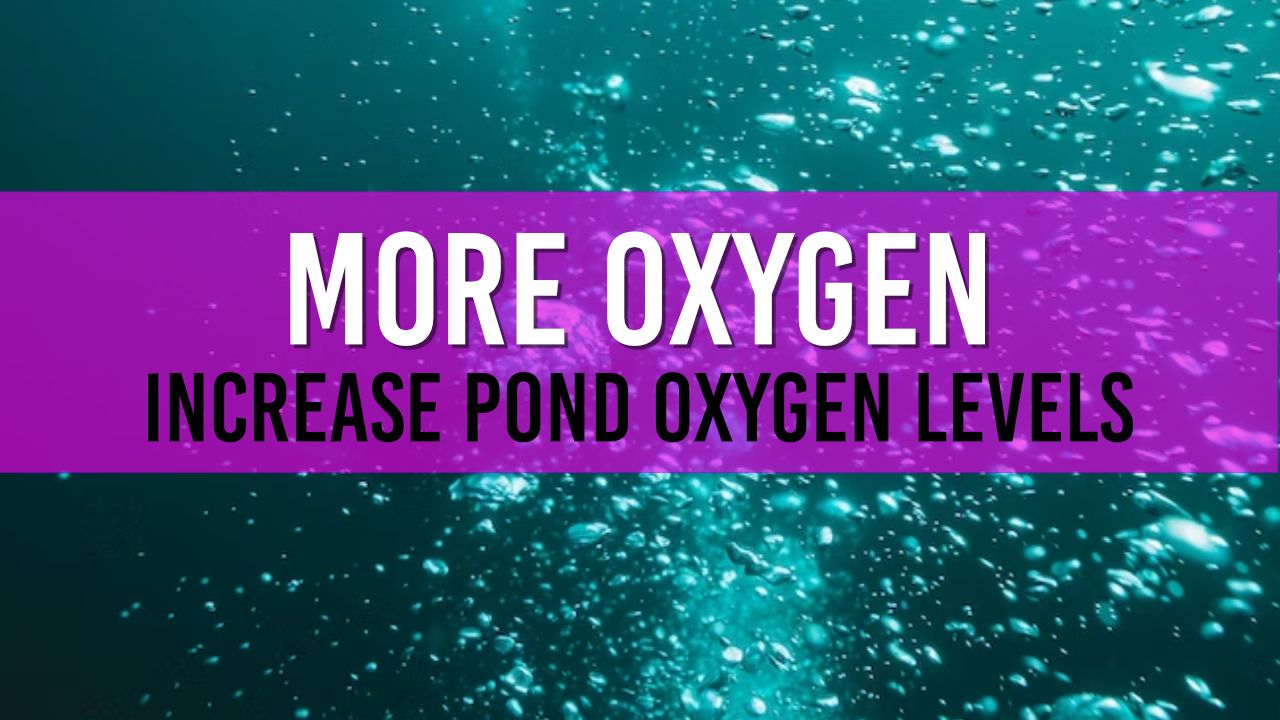How to add more oxygen to my pond
The easiest way to add more oxygen to your pond is to aerate the water. You can do this with an air pump or water fountain.

Table of Contents
Oxygen is essential for maintaining a healthy pond environment. Not only does it benefit the fish and aquatic life, but it also aids in breaking down organic waste, reducing algae growth, and promoting overall water quality. In this article, we'll explore various methods to increase the oxygen levels in your pond.
1. Aerate the water
Aeration is the most effective way to introduce oxygen into your pond. Aeration can be achieved through several methods, such as using fountains, waterfalls, or pond pumps. These devices create water movement, allowing oxygen to dissolve into the water and circulate throughout the pond. If you're unsure whether a solar-powered pond pump will suffice, visit our website for more information.
2. Install a pond air pump
An air pump is designed to provide supplemental aeration by pumping air directly into the water, creating bubbles and surface agitation. This process increases the surface area of the water exposed to air, allowing more oxygen to dissolve. To ensure the air pump works efficiently, make sure to hide the air line properly.
3. Keep the pond clean
Maintaining a clean pond is crucial in preventing oxygen depletion. Decaying organic matter, such as leaves, fish waste, and uneaten food, consume oxygen during decomposition. Regularly remove leaves and other debris, clean your filter box, and check your pond pump to ensure it's functioning correctly.
4. Control algae growth
Excessive algae growth can lead to oxygen depletion, as they consume oxygen during the night. To control algae, introduce pond plants, such as water lilies, which compete for nutrients and reduce sunlight penetration. Planting pond lilies at the right time is crucial for successful growth. Additionally, consider installing a UV filter to combat algae and improve water quality.
5. Avoid overstocking fish
Overstocking your pond with fish can result in oxygen depletion, as they consume oxygen through respiration. Ensure you have an appropriate fish-to-water ratio to maintain healthy oxygen levels. If you notice fish gasping for air, it's a sign that oxygen levels are too low.
6. Limit fish feeding
Overfeeding fish can lead to uneaten food and increased waste, both of which consume oxygen during decomposition. Feed your fish the appropriate amount to avoid overfeeding and consider feeding during specific weather conditions for the best results.
7. Monitor water temperature
Higher water temperatures can reduce the water's oxygen-holding capacity. During hot weather, take precautions to keep your pond cool by providing shade and adding floating plants. Additionally, consider using rainwater to top up your pond, as it's typically cooler and contains dissolved oxygen.
8. Ensure proper pond depth
A deeper pond can help maintain a more stable water temperature and provide a larger water volume, which generally holds more oxygen. If you're planning to make your pond deeper, ensure that the pond liner is appropriately sized and that you're using the correct type of aquatic compost.
9. Create varying depths and zones
Creating different depths and zones in your pond can help maintain a diverse ecosystem and promote healthy oxygen levels. For example, shallow zones provide habitat for emergent plants, which contribute oxygen to the water. Deeper zones offer cooler water temperatures, which can hold more dissolved oxygen.
10. Introduce beneficial bacteria
Adding beneficial bacteria to your pond can help break down organic waste more efficiently, reducing oxygen consumption during decomposition. This process can improve overall water quality and support a healthy pond environment. Be sure to follow the product instructions for proper application.
Conclusion
In conclusion, maintaining adequate oxygen levels in your pond is crucial for supporting a healthy ecosystem. By implementing these strategies, you can ensure your pond remains a thriving environment for your fish and plants.

